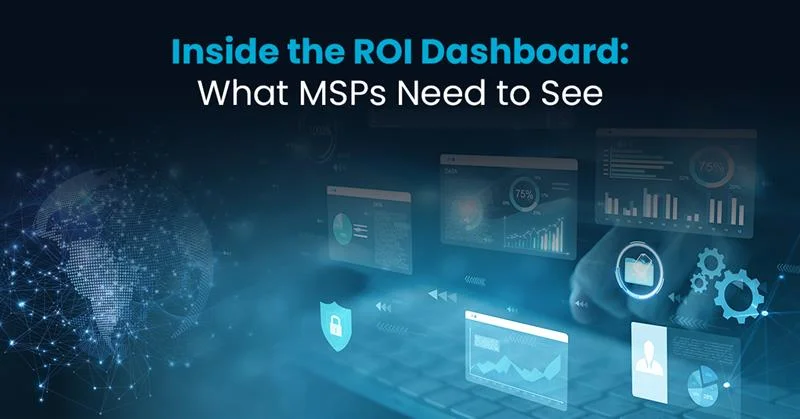MSP patch management is a critical service for protecting your customers’ systems and networks from security vulnerabilities and performance issues. In today’s ever-evolving threat landscape, even a small oversight can lead to significant disruptions or data breaches. As an MSP business, it’s your responsibility to ensure that your customers’ IT infrastructure is continuously updated and secure. A solid understanding of patch management is essential for minimizing risks and maintaining the reliability and performance of your customers’ systems.
This guide will walk you through everything you need to know about MSP patch management, from the basics to best practices. Whether you’re new to patch management or looking to refine your existing processes, this comprehensive overview will equip you with the knowledge you need.
What is MSP patch management?
Patch management involves identifying, deploying and verifying updates to fix security vulnerabilities, bugs or performance issues in software and systems. To stay ahead, you need a structured approach that includes assessing and testing patches in a controlled environment. Then, schedule deployments during maintenance windows and monitor for any issues after installation. By staying on top of patches, you can minimize risks and ensure the reliability of your customers’ IT infrastructure.
Key components of MSP patch management
The process of patch management involves three key components to ensure that patches are identified, deployed and verified correctly. Here’s a breakdown:
Patch identification
Start by identifying the patches that need to be applied. This involves staying updated with vendor websites, security advisories and vulnerability databases. Automated patch management tools can simplify this by providing real-time alerts. Engaging with the broader cybersecurity community through security forums and peer collaboration can also offer insights into emerging threats and recommended patches.
Patch deployment
After identifying patches, deploying them promptly is essential. Establish a regular patch deployment schedule that minimizes system interruptions for your customers. Prioritize critical patches that address severe vulnerabilities to ensure the most critical assets are protected. Categorize patches based on severity and impact to allocate resources effectively.
Patch verification
Patch management isn’t complete without verification. After deployment, verify that patches are applied successfully and that vulnerabilities are resolved. Test and monitor systems post-deployment, and have a rollback plan ready in case issues arise. Regular audits and reviews are vital to ensuring the overall effectiveness of your patch management process.
Read Also: RMM Patch Management: Ensure Efficacy, Security & Scalability
Best practices for effective patch management
Implementing best practices in MSP patch management is essential for ensuring the security and stability of your customers’ systems. Below are key practices that can help you effectively manage patches:
Regular patching schedule
Establishing a consistent patching schedule is critical for maintaining a secure and stable environment. This involves routinely scanning for patches, evaluating their impact, and deploying them systematically. By adhering to this schedule, you ensure that your customers’ systems are always up to date, preventing security vulnerabilities, system crashes, and performance issues.
Prioritizing patches
Not all patches are equally important. Focus on patches that address critical security vulnerabilities first, as these pose the greatest risk to your customers’ systems. Tailoring patch prioritization based on your customers’ specific needs and risk profiles helps optimize the patch management process, ensuring that essential updates are applied promptly to minimize potential threats.
Testing before deployment
Before deploying patches, it’s vital to test them in a controlled environment that mirrors your customers’ systems. This practice reduces the risk of compatibility issues or disruptions. By identifying potential conflicts during testing, you can proactively address issues, ensuring smooth patch deployment and minimizing downtime for your customers.
Common challenges of patch management service
As you are managing multiple customers for patch management services at once and it can lead to several challenges such as:
- Patch overload: The sheer volume of patches released regularly can over whelm IT teams, making it difficult to prioritize and deploy them efficiently across multiple customer systems.
- Compatibility issues: Patches may not always be compatible with all systems and applications, leading to potential conflicts, disruptions or downtime.
- Testing before deployment: Ensuring that patches are thoroughly tested in a controlled environment before deployment can be time-consuming but is essential to avoid causing system issues.
- Timely deployment: Delays in deploying critical patches can leave systems vulnerable to security threats, but balancing this with the need for thorough testing is challenging.
- Resource constraints: Managing patching across multiple customers with limited resources can strain IT teams, especially if manual processes are involved.
- Customer-specific requirements: Different customers may have unique requirements or environments, making it difficult to standardize patch management processes across all customers.
How IT By Design’s NOC team solves your patch management work
When it comes to patch management, partnering with IT By Design’s NOC team means you’re not just getting a service—you’re gaining a true collaborator. We take the time to understand your specific needs and are fully invested in your success. Here’s why you should consider us:
- Proven expertise: With over 20 years of experience as a talent solutions provider to MSPs, IT By Design is uniquely equipped to meet MSP needs, boasting a 96% average patch compliance rate.
- Industry leadership: Being a top NOC provider since 2007, we help MSP businesses enhance service quality while reducing costs.
- Complete accountability: We take full ownership of issue resolution, achieving 97% P1 SLA compliance, ensuring quick and effective solutions.
- Detail-oriented support: Our NOC team is expertly trained on your tools and follows best practices from industry leaders like ITIL and Sea-level, ensuring seamless patch management.
Schedule a meeting with us today to learn how our NOC services can give your business a competitive edge by cutting costs, boosting revenue, and enhancing customer security.
Read Also: A Guide to Network Operations Center (NOC)








